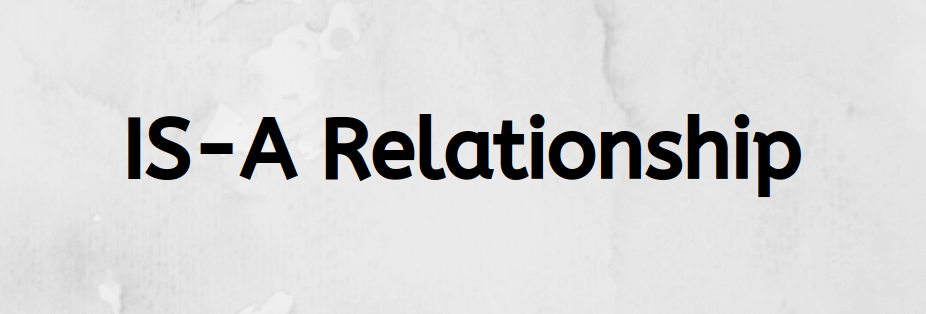IS-A Relationship
In this tutorial, we will discuss IS-A relationship (also known as inheritance) in Java. In object-oriented programming, the concept of IS-A is based on Inheritance, which can be of two types Class Inheritance or Interface Inheritance. It is just like saying, “A is a B type of thing.”
For example, Apple is a Fruit, and Car is a Vehicle, etc. Inheritance is uni-directional. For example, House is a Building. But Building is not a House.
It is a key point to note that you can quickly identify the IS-A relationship. Wherever you see an extends keyword or implements keyword in a class declaration, then this class is said to have an IS-A relationship.

Note
- Parent class reference can be used to hold child class object but by using that reference we are not allowed to call child class specific methods.
class P {
m1() {
}
m2() {
}
}
class C extends P {
m3() {
}
}
class Test {
public static void main(String arg[]) {
P p1 = new P();
p1.m1();
p1.m2();
p1.m3(); //C.E: Child class methods are not available to the parent class.
C c1 = new C();
c1.m1();
c1.m2();
c2.m3(); // Fine
P p2 = new C();
p2.m1();
p2.m2();
p2.m3(); //C.E: By using parent class reference we can’t call child class specific method
C c4 = new P(); //C.E: Child class reference can’t be used to hold parent class object.
}
}- Java won’t provide support for multiple inheritance but through interfaces it is possible.
class A extends B,C {
-----------
-----------
} // C.E
interface A extends B,C {
-----------
-----------
} // Fine- Cycle inheritance is not allowed in java
class A extends B {
}
class B extends A {
}
class A extends A {
}Above both gives compile time error saying cyclic inheritance involving.
That’s all about IS-A relationship in Java. If you have any queries or feedback, please write us at contact@waytoeasylearn.com. Enjoy learning, Enjoy Java.!